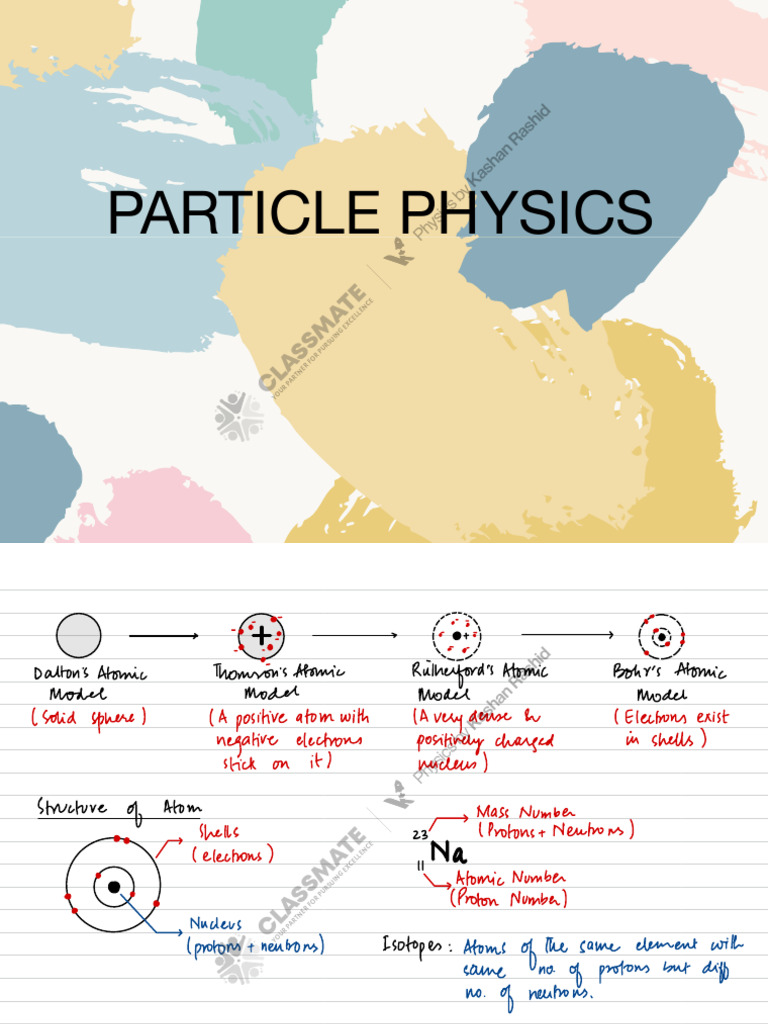Particle physics, a fundamental branch of theoretical physics, delves into the intricacies of the smallest constituents of matter and the forces that govern them. As an overarching field, it aims to elucidate the fundamental structure of the universe. This discipline encompasses a plethora of concepts, experiments, and philosophical inquiries. This article aims to explore the primary tenets of particle physics, providing insights into its key concepts, foundational particles, fundamental forces, and the methodologies employed in this fascinating area of study.
1. Fundamental Particles: An Overview
At the core of particle physics lie its fundamental particles, the building blocks of all matter. These particles are classified into two main categories: fermions and bosons. Fermions constitute matter and include quarks and leptons, while bosons are force carriers that mediate the interactions between matter particles.
Fermions
Fermions are characterized by their half-integer spins. They obey the Pauli exclusion principle, which dictates that no two identical fermions can occupy the same quantum state. Quarks, which combine to form protons and neutrons, are classified as up, down, charm, strange, top, and bottom. Leptons, on the other hand, include electrons, muons, tau particles, and their corresponding neutrinos.
Bosons
Bosons have integer spins and play a pivotal role in mediating forces. The most notable boson is the Higgs boson, which is responsible for imparting mass to other particles via the Higgs mechanism. Other essential bosons include the W and Z bosons, which mediate the weak nuclear force, and gluons, which are responsible for the strong nuclear force binding quarks together.
2. Fundamental Forces: The Interactions
Understanding the forces that govern particle interactions is essential for a comprehensive grasp of particle physics. There are four fundamental forces: the gravitational force, electromagnetic force, weak nuclear force, and strong nuclear force. Each of these forces plays a unique role in shaping the behavior of particles.
Gravitational Force
Although gravity is the weakest of the four forces, it has a profound influence on the macroscopic universe. It governs the interaction between massive objects, ensuring that galaxies, stars, and planets coalesce and maintain their trajectory in the cosmic ballet.
Electromagnetic Force
The electromagnetic force operates between charged particles. It is responsible for the structure of atoms and molecules, encompassing the interactions that give rise to chemistry. This force is mediated by photons and plays a crucial role in various phenomena, from electricity and magnetism to light propagation.
Weak Nuclear Force
The weak nuclear force is fundamental in processes such as beta decay, where a neutron transforms into a proton, emitting a beta particle in the process. This force operates at very short ranges and is mediated by W and Z bosons, facilitating interactions that are essential for nuclear stability and energy production in stars.
Strong Nuclear Force
Conversely, the strong nuclear force is the most potent of the four, binding quarks together within protons and neutrons. It operates at subatomic distances and is facilitised by gluons. This force is integral to the stability of atomic nuclei, counteracting the electromagnetic repulsion between positively charged protons.
3. The Standard Model of Particle Physics
The Standard Model encapsulates the symbiotic relationship of particles and the fundamental forces that govern their interactions. Developed over several decades, it provides a comprehensive framework predicting the behavior of elementary particles through a series of mathematical formulations.
It outlines the spectrum of known particles, categorizing them into three generations of matter. Each generation includes leptons and quarks, with the first generation constituting the most stable particles found in ordinary matter. Despite its successful predictions, the Standard Model is not without limitations. It fails to incorporate gravitational interactions and lacks insights into dark matter and dark energy, paving the way for beyond Standard Model physics.
4. Experimental Techniques in Particle Physics
The exploration of particle physics necessitates sophisticated experimental techniques, primarily conducted in large particle accelerators and colliders. These avant-garde facilities accelerate particles to near light speeds, facilitating high-energy collisions. Observing the resulting collisions allows physicists to glean insights into fundamental interactions and the properties of unobserved particles.
Particle Detectors
Particle detectors play an essential role in experimental particle physics. They are designed to capture and identify particles produced in collisions. Various types of detectors, including calorimeters, tracking detectors, and muon chambers, serve to measure energy, momentum, and other properties of the particles produced. By exploiting sophisticated software algorithms and data analysis techniques, physicists can decode the vast amounts of data generated during experiments.
5. Future Directions: Beyond the Standard Model
The quest for knowledge in particle physics remains unquenchable. Researchers are diligently investigating phenomena that lie beyond the purview of the Standard Model. Areas such as supersymmetry, string theory, and investigations into dark matter are at the frontier of current research. Emerging technologies and international collaborations promise to further unravel the enigmas of the universe, leading to potentially groundbreaking discoveries.
Conclusion
In conclusion, the fundamentals of particle physics encapsulate a realm of exploration that is both profound and intricate. From the classification of fundamental particles to the forces that govern their interactions, this field provides a foundational framework for understanding the universe. As experimental techniques evolve and new theories emerge, the future of particle physics beckons with the promise of deeper insights into the nature of reality.












